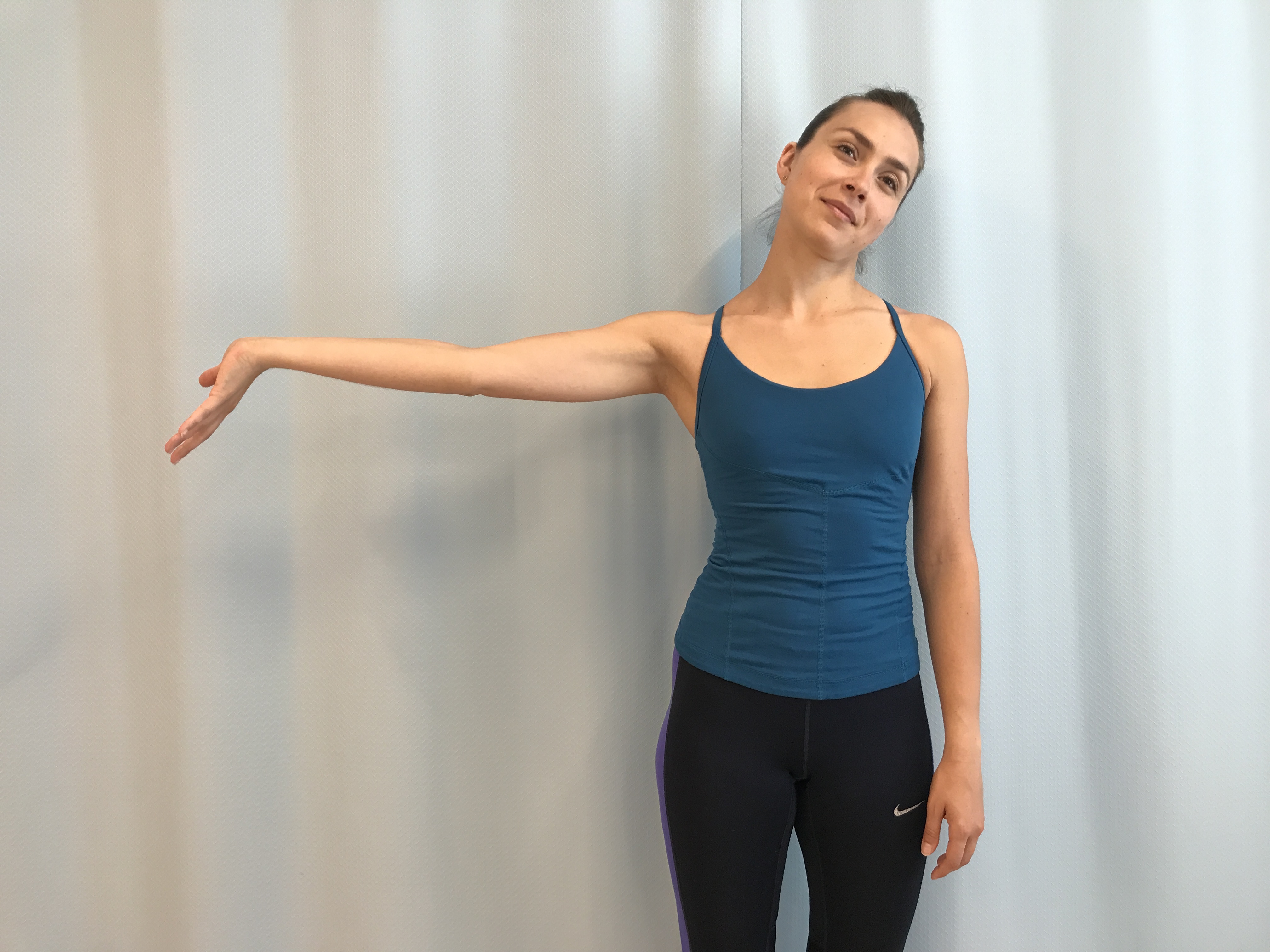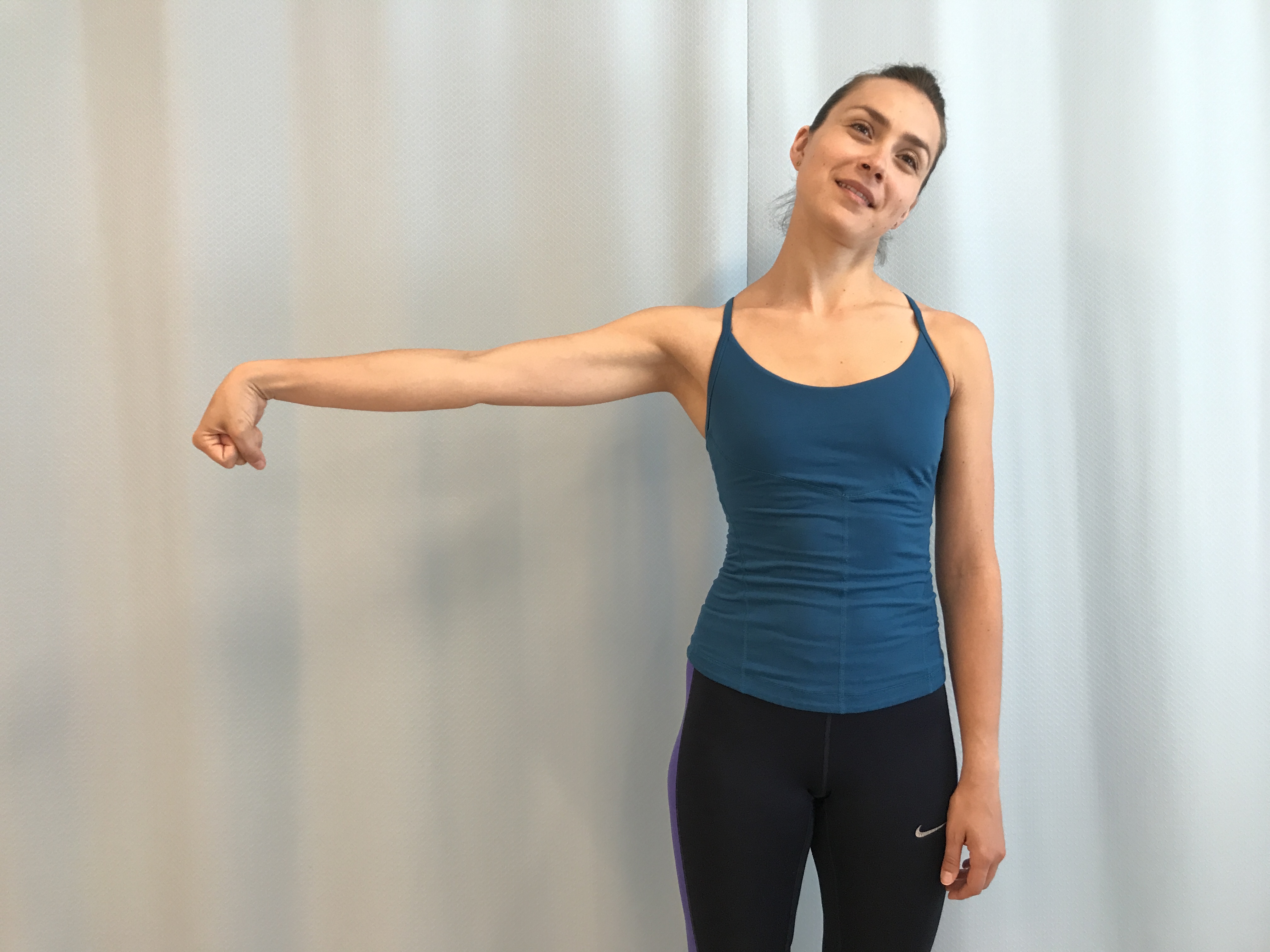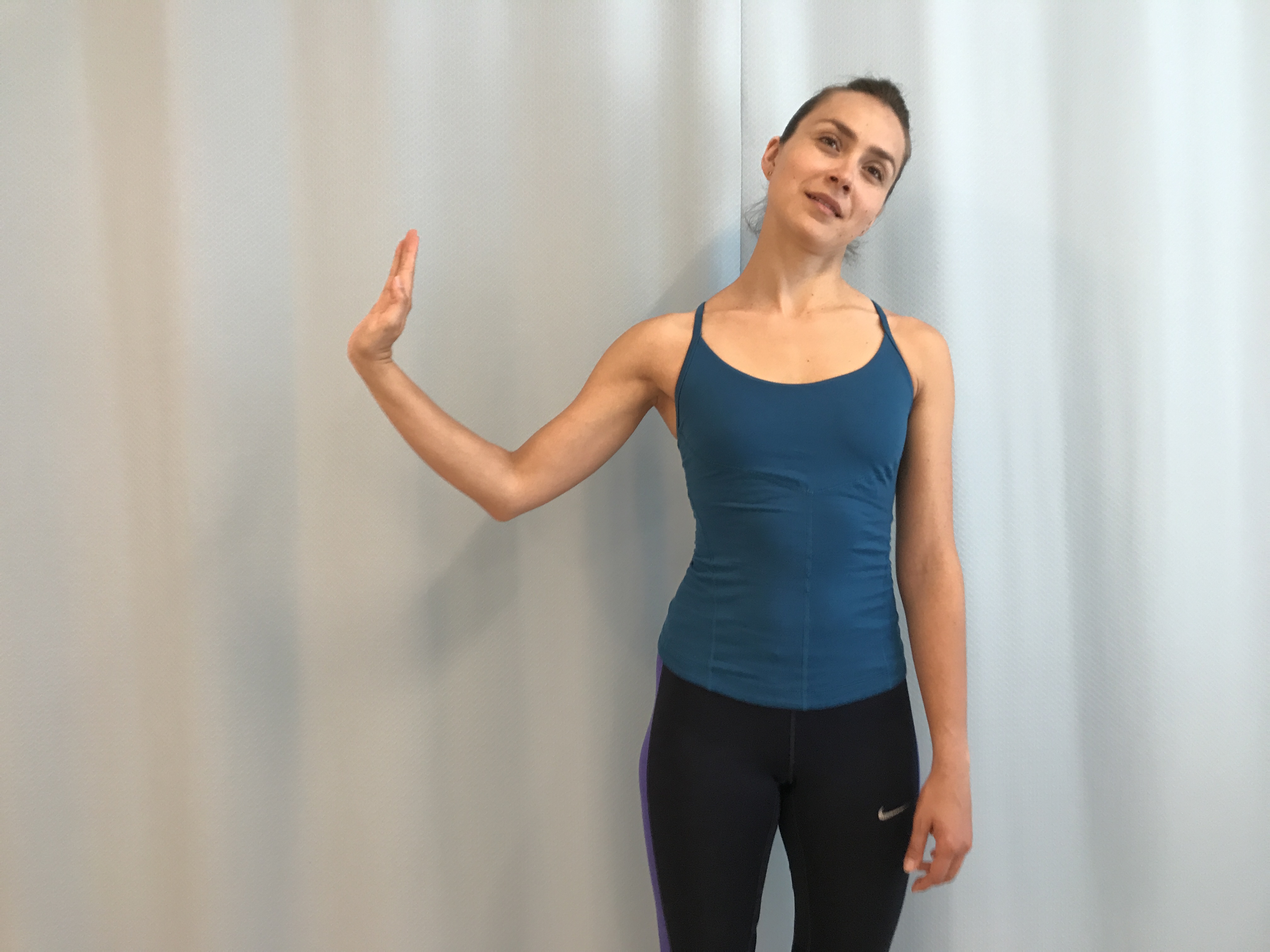Note: This is the eleventh blog post article in a series of 14 articles on Assessment/Diagnosis of musculoskeletal conditions of the neck (cervical spine). See below for the other articles in this series.
The brachial plexus tension test (BPTT) is actually a series of three tests, each one designed to assess one of the three major nerves of the brachial plexus that enter the hand.
- The three principle BPTTs assess the median, radial, and ulnar nerves.
- If there is compression on one or more of these nerves as a result of TOS, referral of sensory symptoms should occur in the upper extremity; this is considered a positive test result.

Figure 14. Brachial plexus tension test (BPTT) for the median nerve. Courtesy Joseph E. Muscolino.
Because the median nerve crosses the elbow, wrist, and finger joints anteriorly, extension of these joints stretches it; because the median nerve enters the forearm from the medial side, forearm supination adds to the stretch. The median nerve travels in the axillary region, so depression of the shoulder girdle and abduction of the arm stretches it. This nerve also travels in the side of the neck, so lateral flexion of the neck to the opposite side further stretches it.

Figure 15. Brachial plexus tension test (BPTT) for the radial nerve. Courtesy Joseph E. Muscolino.
Because the radial nerve crosses the elbow joint anteriorly, extension of the elbow joint stretches it; because it crosses the wrist joint on the posterior and radial side, flexion and ulnar deviation of the wrist joint stretch it; because it crosses into the fingers on the posterior side, flexion of the fingers stretches it; because the radial nerve enters the forearm from the lateral side, forearm pronation adds to the stretch. The radial nerve travels in the axillary region, so depression of the shoulder girdle and abduction of the arm stretches it. This nerve also travels in the side of the neck, so lateral flexion of the neck to the opposite side further stretches it.

Figure 16. Brachial plexus tension test (BPTT) for the ulnar nerve. Courtesy Joseph E. Muscolino.
Because the ulnar nerve crosses the elbow joint posteriorly, flexion of the elbow joint stretches it; because it crosses the wrist joint on the anterior and ulnar side, extension and radial deviation of the wrist joint stretch it; because it crosses into the fingers on the anterior side, extension of the fingers stretches it; because the ulnar nerve enters the forearm from the medial side and enters the hand on the medial side, forearm pronation adds to the stretch. The ulnar nerve travels in the axillary region, so depression of the shoulder girdle and abduction of the arm stretches it. This nerve also travels in the side of the neck, so lateral flexion of the neck to the opposite side further stretches it.
The following are brief descriptions of the three main versions of this test. In each one, the client’s shoulder girdle is depressed, the arm is abducted at the shoulder joint, and the neck is laterally flexed to the opposite side.
- Median nerve test. The elbow joint is extended, the forearm is supinated, and the wrist and finger joints are extended (Fig. 14).
- Radial nerve test. The elbow joint is extended, the forearm is pronated, the hand is flexed and ulnar deviated at the wrist joint, and the finger joints are flexed (Fig. 15).
- Ulnar nerve test. The elbow joint is flexed, the forearm is pronated, the hand is extended and radially deviated at the wrist joint, and the finger joints are extended (Fig. 16).
- The reasoning behind each of the BPTTs is that each position preferentially and maximally stretches one of the three major brachial plexus nerves. If one is familiar with the location of each of the brachial plexus nerves, then each BPTT position can be reasoned out rather than memorized.
- Given that brachial plexus tension assessment tests look to lengthen nerves, they are essentially identical to nerve mobilization treatment techniques.
- Note: When the therapist is abducting the client’s arm at the shoulder joint, it is particularly important to maintain downward pressure on the client’s shoulder girdle to keep it depressed. Otherwise, tension will be removed from the nerves and the assessment test will be ineffective.
This blog post article is the eleventh in a series of 14 blog post articles on Assessment/Diagnosis of musculoskeletal (neuro-myo-fascio-skeletal) conditions of the neck (cervical spine).
The articles in this series are:
- Introduction to Assessment/Diagnosis of the Neck
- Verbal and Written Health History
- Overview of Physical Examination Assessment
- Postural Assessment
- Neck General Orthopedic Assessment: Range of Motion and Manual Resistance
- Palpation Assessment
- Motion Palpation (Joint Play) Assessment
- Special Orthopedic Assessment Tests for the Neck – Space Occupying Conditions
- Special Orthopedic Assessment Tests – Space Occupying Conditions – Slump Test
- Orthopedic Assessment of Thoracic Outlet Syndrome – Adson’s, Eden’s, Wright’s
- Orthopedic Assessment of Thoracic Outlet Syndrome – Brachial Plexus Tension Test
- Special Orthopedic Assessment Tests – Vertebral Artery Competency Test
- Treatment Strategy and Treatment Techniques
- Assessment and Treatment of Specific Musculoskeletal Conditions


